Plate II.
LACE
{| style="margin:0 auto 0 auto;width:850px;"
|- | style="padding-right:1em;vertical-align:top;width:50%;" |
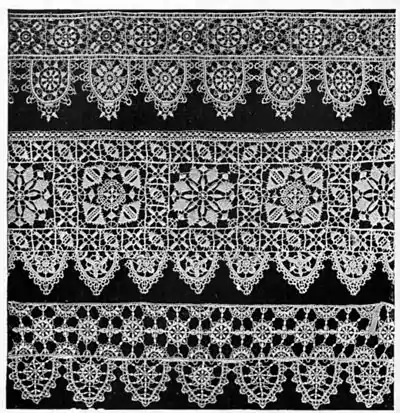
Style usually called “Reticella” on account of the patterns being based on repeated squares or reticulations. The two first borders are of needlepoint work; the lower border is of such pillow lace as was known in Italy as “merletti a piombini.”
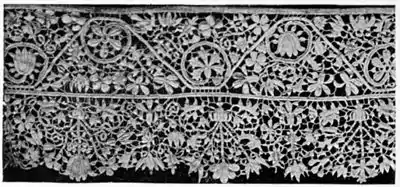
Style called “Punto in Aria,” chiefly on account of its independence of squares or reticulations. Italian. Early 17th century.
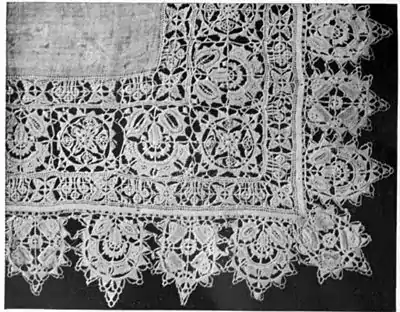
Fig. 5.—CORNER OF A NAPKIN OR HANDKERCHIEF BORDERED WITH “RETICELLA” NEEDLEPOINT LACE IN THE DESIGN OF WHICH ACORNS AND CARNATIONS ARE MINGLED WITH GEOMETRIC RADIATIONS. Probably of English early 17th century.
| style="vertical-align:top;padding-left:1em;width:50%;" |
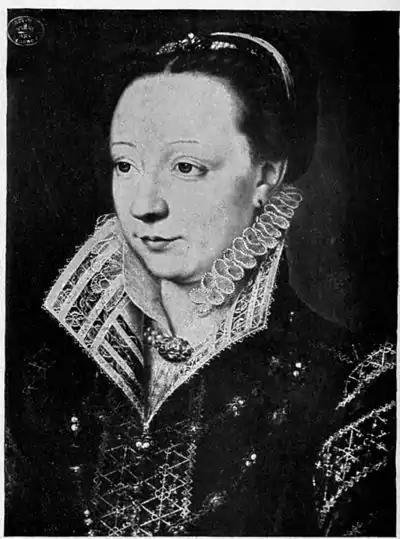
Fig. 4.—CATHERINE DE MEDICI, WEARING A LINEN UPTURNED COLLAR OF CUT WORK AND NEEDLEPOINT LACE. Louvre. About 1540.
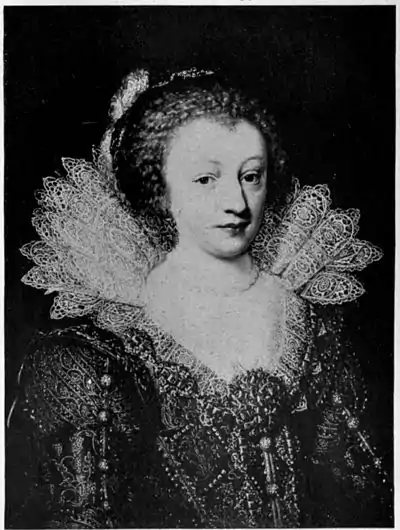
LACE. By Morcelse. The Hague. About 1600.
(Figs. 4 and 6 by permission of Messrs Braun, Clement & Co.,
Dornach (Alsace), and Paris.)
|}